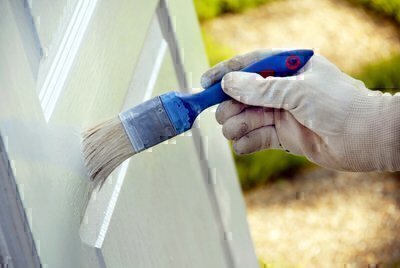Exterior Painting Tips
Last updated June 2021
Modern paints are formulated to withstand severe swings in temperature and resist fading, shrinking, cracking, and peeling. But you’ll get good results only if the job is done well. Here are some tips.
 Scrub it, scrape it, and sand it. If you try to bury old problems under new paint, the old issues will soon re-emerge, like architectural zombies. A pressure washer speeds up things, but you’ll still need to scrape and sand problem areas by hand. Washing off mold and scraping away loose paint might take longer than painting, but it will produce longer-lasting, better-looking results.
Scrub it, scrape it, and sand it. If you try to bury old problems under new paint, the old issues will soon re-emerge, like architectural zombies. A pressure washer speeds up things, but you’ll still need to scrape and sand problem areas by hand. Washing off mold and scraping away loose paint might take longer than painting, but it will produce longer-lasting, better-looking results.
Make needed repairs. If wood is split, or there are hard edges between solid paint and bare areas where loose paint was scraped away, fill it and sand it down. Drive flush any raised nail heads or replace them with screws. If you find gouged or rotted wood, clean out the damage and fill the depression with epoxy; or replace the entire piece.
Re-caulk. Use an exterior-grade flexible (typically silicone-based) caulk.
Prime it. All raw wood should be primed. One thick finish coat of even the best paint will soak into raw wood more than painted wood, create adhesion and wrinkling problems, and show up as dull spots when dry.
Remove fixtures. It’ll be easier to take off lights, vent covers, and garden-hose racks than to mask them off or paint around them.
Follow the sun around the house. Morning dew is burned off, the siding is warmed before paint is applied, and problems that stem from working in harsh sunlight are avoided. If possible, schedule exterior projects when the weather forecast calls for a few days of warm temperatures, modest breezes, and no rain.
Keep a wet edge along the work boundary. Work on a section small enough to complete so that it’s still wet when you move to the next area. If an edge dries, you’ll get lap marks when you start the adjacent area. The best bet is to complete sections that fall between windows, doors, and corners.
Work from high to low. Cut in around trim, then brush out walls, so any drips can be picked up on the way down. If drips harden, scrape them off.


